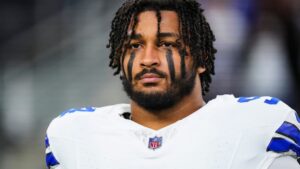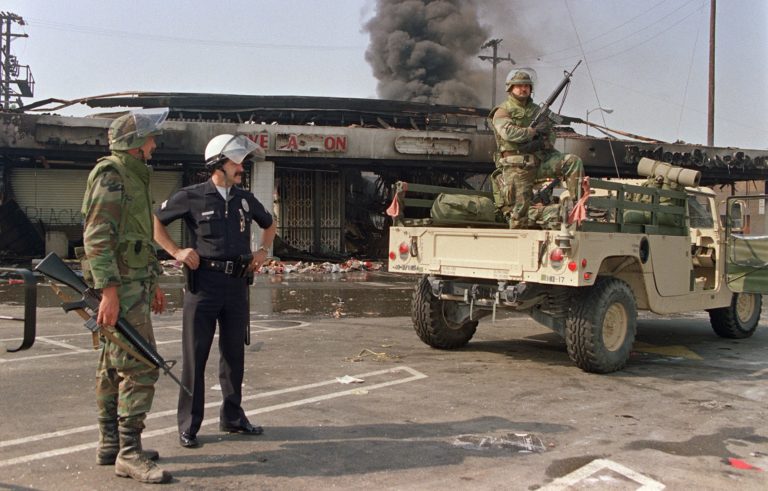The Impact of the LA Riots: A Comprehensive Look at the Role of the National Guard in Los Angeles
The 1992 LA Riots, also known as the Rodney King Riots, were a significant turning point in American social and political history. Spanning from April 29 to May 4, this civil disturbance shook Los Angeles and highlighted crucial issues of race, police brutality, and the role of government in maintaining order. At the center of this turmoil was a complex situation involving the deployment of the National Guard in Los Angeles, an action that drastically altered public perception and response during a time of crisis.
Understanding the LA Riots requires an exploration of their causes, key events, and the subsequent aftermath. This article delves into these areas, especially focusing on the military and governmental responses that defined this painful chapter in American history. Access to external resources has been essential in piecing together the extent of the National Guard’s involvement, especially from reputable sources like Defense360.
Background of the LA Riots
The catalyst for the LA Riots was the acquittal of four LAPD officers who were charged with the excessive use of force in the arrest of Rodney King, an African American man. The incident, captured on video, depicted brutal police violence and sparked outrage across the nation. The city of Los Angeles, already tense due to historical racial inequalities and economic disparities, became a powder keg following the verdicts rendered on April 29, 1992.
Demonstrations erupted shortly after the verdict, but what began as a peaceful protest quickly escalated into widespread violence, looting, and arson. Over a period of six days, approximately 60 people lost their lives, thousands were injured, and extensive property damage was caused throughout the city, leading to a staggering loss estimated at over $1 billion.
Understanding the Role of the National Guard
As chaos filled the streets of Los Angeles, the city and state authorities realized that they needed additional support to regain control. The situation soon exceeded the capacity of local law enforcement agencies, leading to a significant decision: the deployment of the National Guard in Los Angeles.
The National Guard has historically played a crucial role in responding to domestic disturbances, and its involvement operates under the notion of providing assistance during times when civil order is threatened. In the case of the LA Riots, approximately 4,000 National Guard troops were deployed alongside LAPD and other law enforcement agencies to restore order and ensure the safety of civilians. Additionally, federal troops were later involved in the efforts to stabilize the region as violence continued.
But what brought the National Guard to Los Angeles during this pivotal moment? The answer lies in their constitutional role. According to the U.S. Constitution, the National Guard can be mobilized by state governors or the President to provide support during emergencies, including riots, natural disasters, and other emergencies. In California, Governor Pete Wilson authorized the deployment, marking a significant intervention in a crisis that escalated rapidly.
The Dynamics of the Deployment
The process of mobilizing the National Guard involved meticulous planning and coordination between state and federal authorities. Once the National Guard was activated, their mission included restoring public safety, securing critical infrastructure, and supporting law enforcement in curbing the violence that had engulfed Los Angeles. Their presence was notably seen as a show of force, aimed at reassuring the citizens that the situation was under control.
Initially, troops were deployed in specific high-risk areas known for violence, including South Central Los Angeles, hotspots for looting, and arson. While their presence led to the reduction of immediate violence, the deployment also sparked discussions about the implications of using military forces in civil unrest. The line between maintaining civil order and infringing upon constitutional rights became a topic of heated debate among citizens, policymakers, and civil rights advocates.
Lessons Learned from the Riot’s Aftermath
The LA Riots were a wake-up call for numerous institutions in America, revealing systemic issues that transcended police brutality. In the wake of the riots, investigations were initiated, and discussions about police reform intensified. Community leaders and lawmakers began advocating for improved relations between the police force and minority communities as they recognized the necessity of addressing underlying issues contributing to the riots.
Furthermore, the National Guard’s role and the deployment process garnered substantial scrutiny. Although they were crucial in restoring order, the discussions surrounding the militarization of police forces began to resurface, with calls for more humane approaches to civil disturbances, involving dialogue rather than force.
Conclusion: Reflection on Government Response and Policy Changes
The LA Riots underscored the need for an effective governmental response to social unrest. The deployment of the National Guard in Los Angeles not only revealed the complexities of such actions but also sparked widespread conversation about community relations, emergency response protocols, and civil rights. There is still much to be learned today from this incident, as we continue to grapple with issues of race, policing, and community safety. The historical lessons remain relevant, guiding how law enforcement and communities interact to prevent similar incidents from occurring in the future.
In conclusion, the LA Riots of 1992 remain a powerful reminder of the potential for social unrest in a divided society. With ongoing discussions regarding race relations, policing, and community trust, reflecting on these historical events is essential. The involvement of the National Guard was a critical element in the response to the riots, embodying the intersection of military readiness and civil order. Only by understanding our past can we work towards a more equitable future for all citizens.








